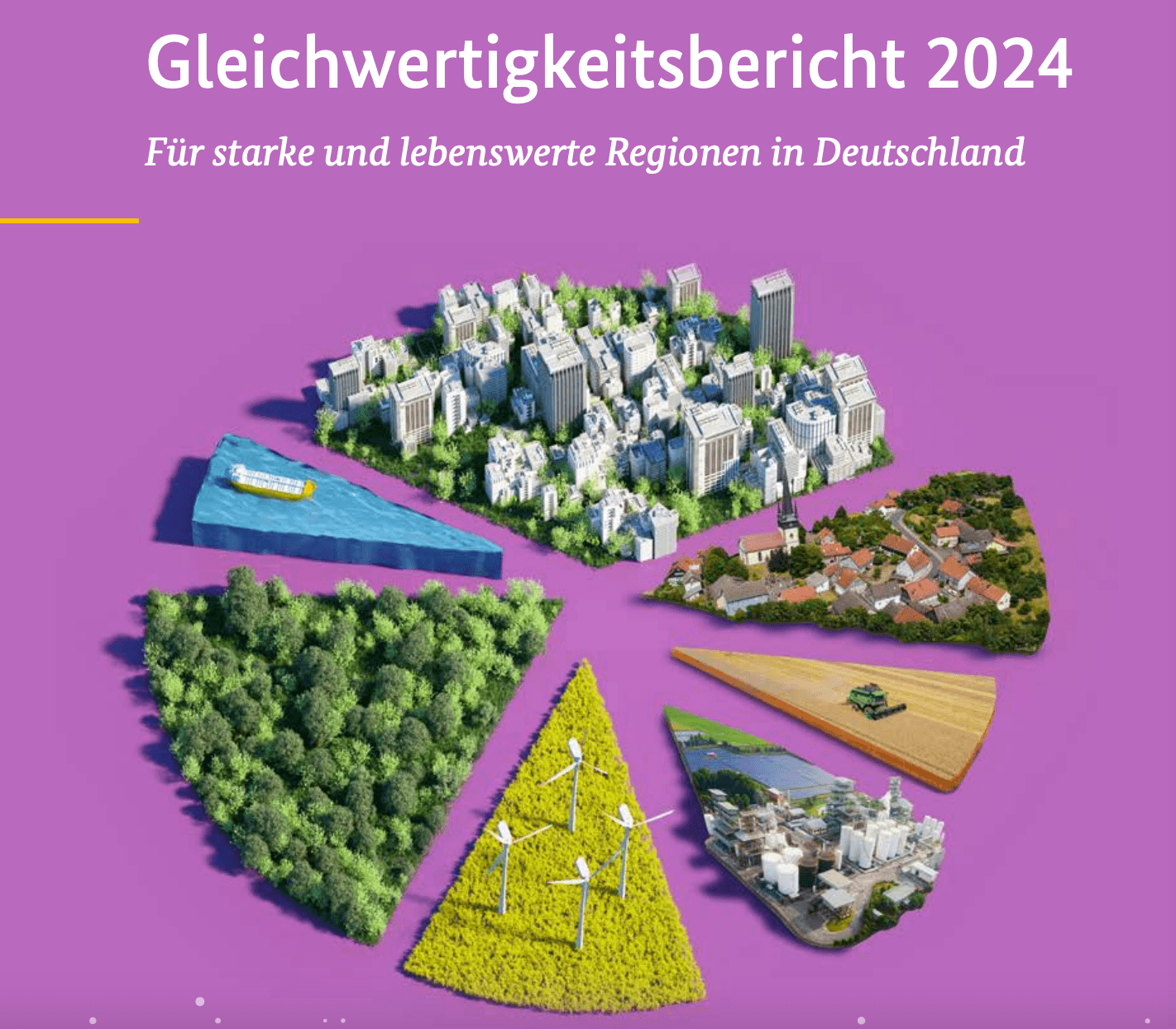The first Equivalence Report 2024 is out now
- From Xhulia Likaj
- Reading duration 3 min

One of the objectives of the coalition agreement for the 20th legislative period was to present the current status and progress in establishing equitable living conditions in Germany in a more transparent way. In this context, the federal government has published the first Equivalence Report 2024 (Gleichwertigkeitsbericht 2024).
The report emphasizes that "equivalent" does not mean "equal." Rather, the government aims for an upward convergence, where living conditions are approximated at a higher level. The goal is that every citizen can live well in their desired region.
A comprehensive analysis of current living conditions shows that the differences between regions in Germany have decreased in many indicators. 27 out of 38 equivalence indicators show a convergence process, while only seven indicators have seen an increase in regional differences. This development is also reflected in the international context, with Germany being one of the OECD countries with relatively low regional inequality.
Nevertheless, the challenges remain significant, especially considering the projected population development until 2045. While the population in economically stronger districts is expected to increase, a significant population decline is anticipated in structurally weaker regions. This could lead to a weakening of the skilled workforce base, the economic situation, and the municipal budgets in these regions.
For the first time, a large-scale population survey was conducted to include the subjective perceptions and assessments of citizens. The results show an overall high satisfaction with the living and housing situation, with this satisfaction increasing with age and higher household net income.
Another focus of the report is on the measures of the "National Funding System for Structurally Weak Regions" (GFS). The GFS funds are primarily used in areas with the greatest structural policy needs. These measures have already shown positive effects on economic strength, employment, wages, and infrastructure in the supported regions.
In the future, the federal government plans to align the guidelines of individual programs more comprehensively with the promotion of equivalent living conditions and economic transformation. Additionally, transparency and efficiency of the funding system are to be improved to better address the needs of municipalities. The federal government will continue to take measures to promote the decentralized settlement of government jobs and thus bring jobs to structurally weak regions.
Finally, the federal government will initiate a follow-up process to set the course for strengthening equivalent living conditions. Existing programs are to be reviewed and harmonized if necessary. Particular attention will be paid to improving data foundations and developing a comprehensive monitoring system to better measure the progress in achieving equivalent living conditions.
